Chronic acute or aching hip joint (HJ) pain often indicates the development of musculoskeletal disorders that are important to be diagnosed and treated in a timely manner. In the initial stages of the development of pathology, it will be possible to relieve joint pain in a conservative way, using special tablets and ointments. When the disease begins, the joint becomes immobile, and the constant pain syndrome worries, and surgical intervention is indispensable.
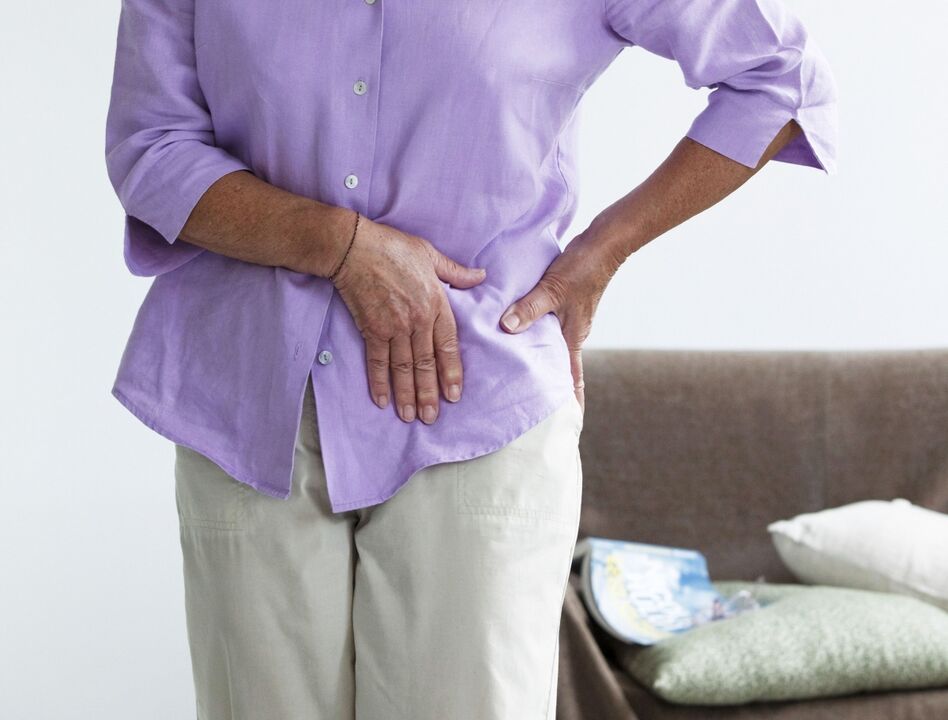
Possible causes and symptoms
Severe pain in the hip joint can be caused by various degenerative-dystrophic pathologies, under the influence of which the joints are destroyed, erased and cease to function fully. Periodic pain is often a concern in diseases of the spine, due to which there are tensions in the muscles and pinching of nerve fibers. Symptoms of pain in the pelvic bones appear due to injuries, bruises, fractures of the head or neck of the femur. To accurately determine the causes of hip pain, you need to see a doctor.
traumatic factors
Severe bruises
Acute pain when sitting, walking or spreading the leg is caused by bruises caused by a sideways fall or a direct blow to the thigh joint. With bruises, the structure of the bone tissue remains intact, but soft fibers suffer greatly and damage to the ligament can occur. An extensive hematoma is formed at the site of impact, which hurts when pressed, but when the person is at rest there is no pain syndrome. If the pain in the hip joint on the left or on the right gradually increases, it is worth seeing a doctor to rule out a fracture.
hip dislocation
Such an injury occurs under the influence of a large force along the axis, bent at the knee joint with a tight torso. A typical situation of this condition is an accident or a fall from a height. With dislocations, a person is concerned about a sharp pain in the joint, radiating to the leg and groin areas, completely disrupting the functioning of the limb. You can relieve the condition by applying cold to the affected area, further qualified medical help is required.
It is important to note that if a dislocation is suspected, it is forbidden to adjust the joint yourself.
hip fracture
Often the cause of hip joint pain in women as they age. Integrity damage often occurs due to a fall and severe impact of the trochanter on a hard surface. A femoral neck fracture is considered one of the most dangerous pathologies, since there is a high risk of complications in the form of thrombosis, infection and necrosis. Typical symptoms:
- Severe pain in the left or right hip joint, aggravated by attempts to move or move the limb to one side.
- While sitting or lying down, the victim cannot lift their leg off the floor.
- It looks foreshortened in relation to a healthy, injured leg.
- When nerve structures are affected, numbness occurs in a limb.
After the operation
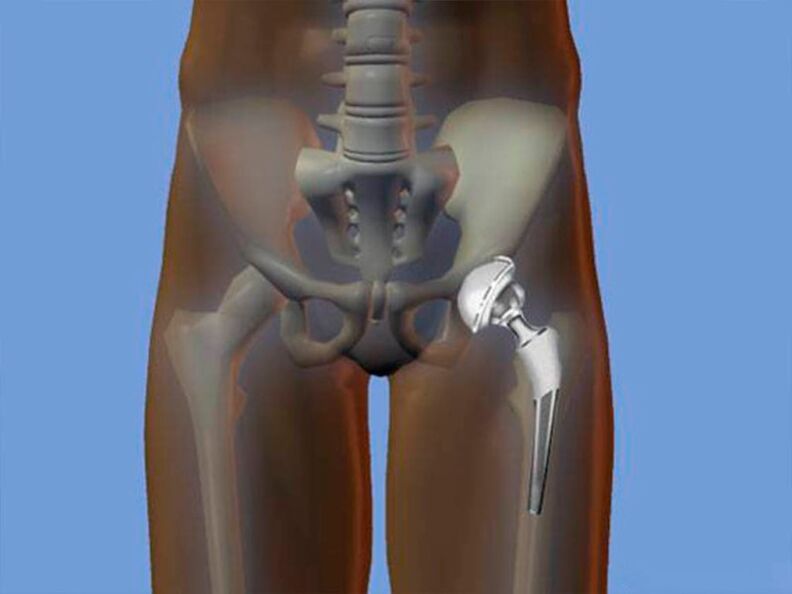
Often after the operation, in connection with the installation of the implant, there is pain in the hip joint, lower back and back. The need to insert an endoprosthesis arises in cases where for some reason the native joint is worn and worn out, and it is not possible to cure the problem in a conservative way. To prevent further destruction of the joint, an endoprosthesis is performed. After the operation, until the wound has completely healed, the patient is tormented by pain, but with each new day its intensity decreases.
Complications after hip replacement not only affect the hip area, but also affect the general physical, mental condition, physical activity and walking ability. In order to restore former health, it is necessary to undergo a number of rehabilitation measures that are prescribed due to the pathologies and problems that have developed. For a quick and effective recovery, it is necessary to identify the causes of complications and limitations after hip arthroplasty.
Diseases
contagious inflammation
A dangerous complication that causes pain in the hip joint. There are such types of purulent inflammation:
- Primary. The main reason is the penetration of pathogenic microflora directly into the joint cavity.
- Secondary. The infection penetrates the joint structures with blood from other foci of inflammation.
Symptoms of an inflammatory complication are:
- musculoskeletal pain;
- edema formation;
- skin redness;
- high temperature;
- limb dysfunction.
Inflammatory bursitis
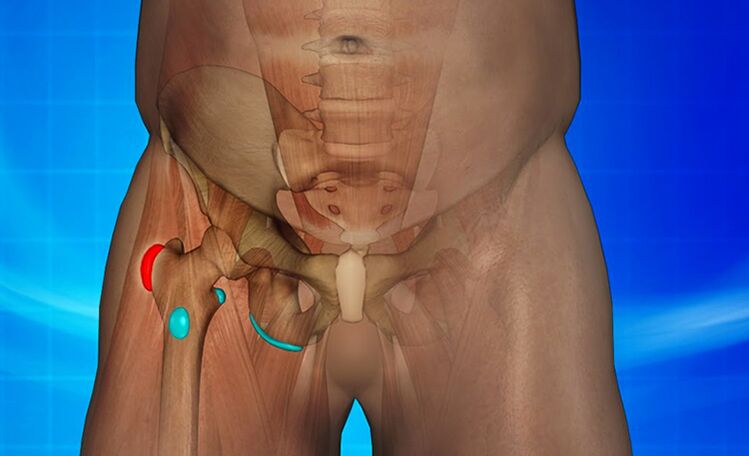
Often, frequent injuries to the joints lead to an inflammatory process in his pockets.
This disease is often diagnosed in athletes, whose knee and hip joints are prone to frequent injuries and bruises.
Under the influence of a traumatic factor, inflammation develops in the joint sacs. Gradually, pathological exudate accumulates in the bursa, an inflammatory complication occurs. When walking, pain in the groin and below begins to bother, giving way to the knee. There is a feeling of stiffness of movements, in advanced cases the limbs hurt even at rest, the temperature rises and puffiness is formed.
tumors of various origins
Pain in the hip joint on the right or left side can cause neoplasms:
- Benign. Increasing in size, they compress the nerve structures, causing discomfort and periodically causing unpleasant symptoms in the spine and hips.
- Malignant. These are dangerous neoplasms that tend to grow rapidly and spread metastases throughout the body. In the initial stages, the patient complains of joint pain after running or walking. Increasingly, the tumor compresses the nervous structures, a person's leg is taken away, the sacrum is very sore, painful symptoms are felt in the lumbar regions. In this case, the usual painkillers are not able to relieve pain in the hip joint.
- Sarcoma of the femoral neck. Severe, cancerous disease of the bone, as it progresses, the patient's pelvic bones become very sore after sitting, walking, standing. The disease is characterized by chronic femoral neck fractures, which significantly limit the function of the joint. Also concerned about the signs of intoxication, under the influence of which the general condition of the patient deteriorates significantly.
Different reasons
Due to the destruction of the cartilage in the joint, a person begins to have difficulty moving.
If a person has a sore leg and hip joint, the following pathologies can cause such symptoms:
- coxarthrosis. A chronic, degenerative-dystrophic disease characterized by destruction of interarticular cartilage and growth of osteophytes on bony structures. In the initial stages, the symptoms are not expressed, but with progressive progression, the functional mobility of the joint is disrupted, the patient is bothered by excruciating pain, muscle deformities and atrophy are observed. If treatment is not started on time, a person will become disabled.
- osteochondrosis. A degenerative disease in which the lumbar spine is destroyed and deformed. Due to inflammation and pinching of nerve fibers, pain radiates to the thigh, the patient's motor activity is significantly reduced, discomfort worries even at complete rest.
When the hip joint hurts in a child, the development of such pathologies is possible:
- dysplasia and subluxations of the hip joint;
- osteochondropathy;
- epiphyseolysis.
diagnostic methods
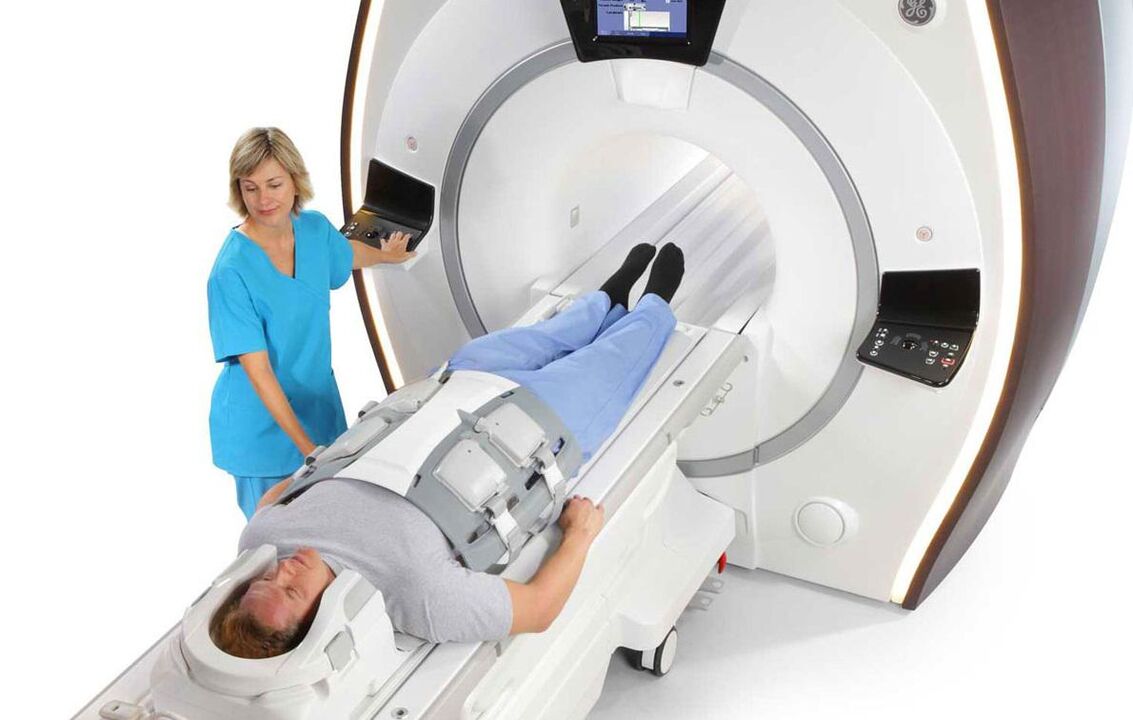
With severe, persistent pain in the hip joint, you need to contact an orthopedist who will help you make an accurate diagnosis and prescribe an adequate treatment regimen.
After conducting an initial examination and taking an anamnesis, the doctor gives an instruction to carry out such diagnostic measures:
- X-ray examination of the spine and hip joint;
- dopplerography and angiography of vessels;
- electromyography;
- CT, MRI of the thigh;
- Laboratory tests that show the presence or absence of other dangerous pathologies in the body.
What is the treatment?
Effective Medicines
Depending on the patient's diagnosis, the doctor selects an adequate drug therapy regimen aimed at eliminating concomitant symptoms and relieving the patient's general condition. During conservative treatment, it is important to limit the load on the joint, if necessary, to observe bed rest and use orthopedic devices. The following middle groups are used:
- Non-steroidal anti-inflammatory drugs. Helps with inflammation, swelling and pain.
- analgesics. Reduce acute pain.
- glucocorticosteroids. If NSAIDs did not help to get rid of the inflammatory complication, then steroid drugs are prescribed, which are injected directly into the joint cavity.
- muscle relaxants. Relieve muscle spasms.
- hemostatic. Promote the resorption of hematomas.
- chondroprotectors. Restore cartilage structures and prevent their further destruction.
auxiliary methods
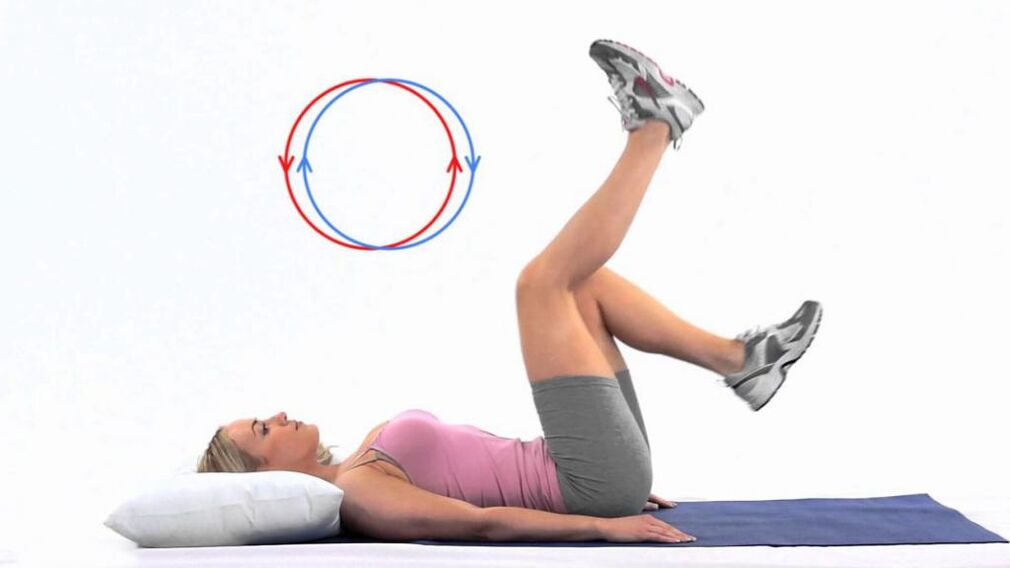
The exercise bike "bicycle" will help to avoid problems with articulation.
To speed up recovery and normalize the functioning of the hip joint, it makes sense to regularly conduct therapeutic exercises. The training complex is selected by the doctor for each patient individually, taking into account the general condition and diagnosis. For prevention, it is recommended to do the following exercises every day:
- Bicycle;
- Scissors;
- pick up small objects with toes;
- Walking barefoot on toes and heels.
In parallel, a course of physiotherapeutic procedures is prescribed, for example, electrophoresis, phonophoresis, laser therapy, massage. Surgical intervention is indispensable when diagnosing malignant tumors or advanced pathologies of a deforming nature. During the operation, the surgeon removes the affected tissue and, if necessary, inserts an implant. To prevent relapse and speed up recovery, rehabilitation is prescribed.














































